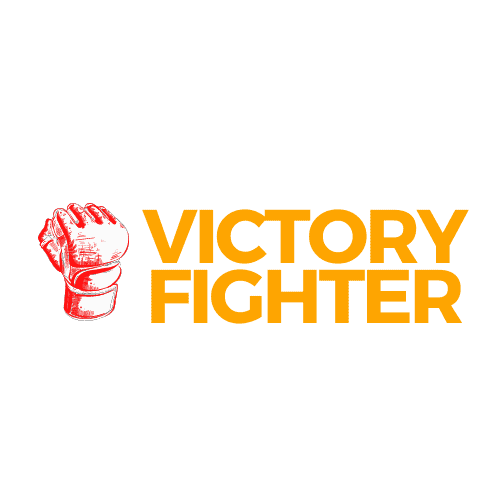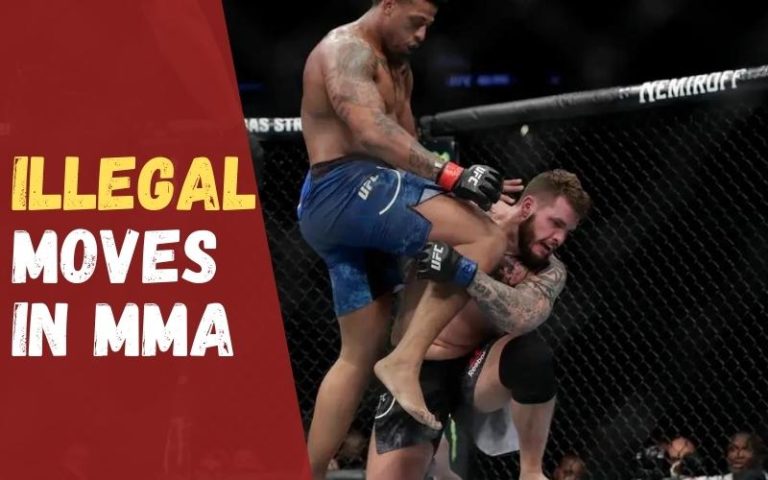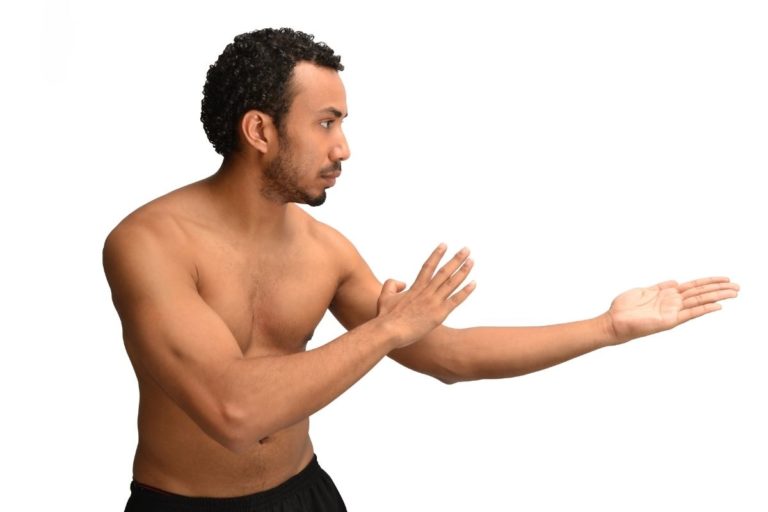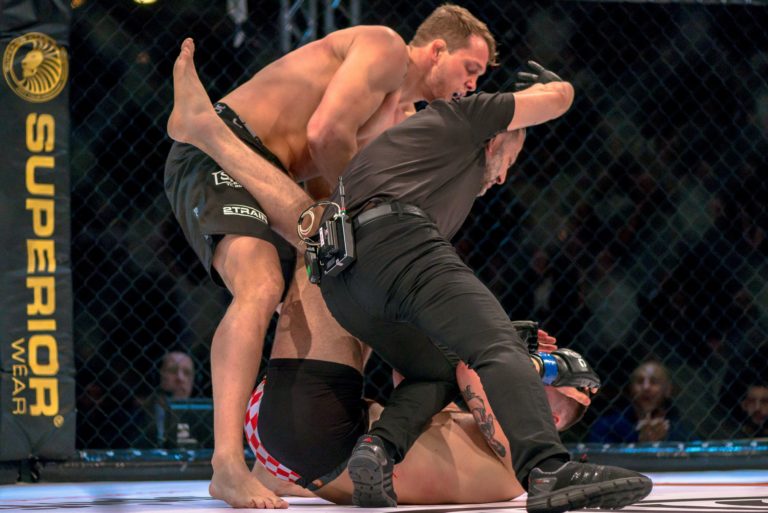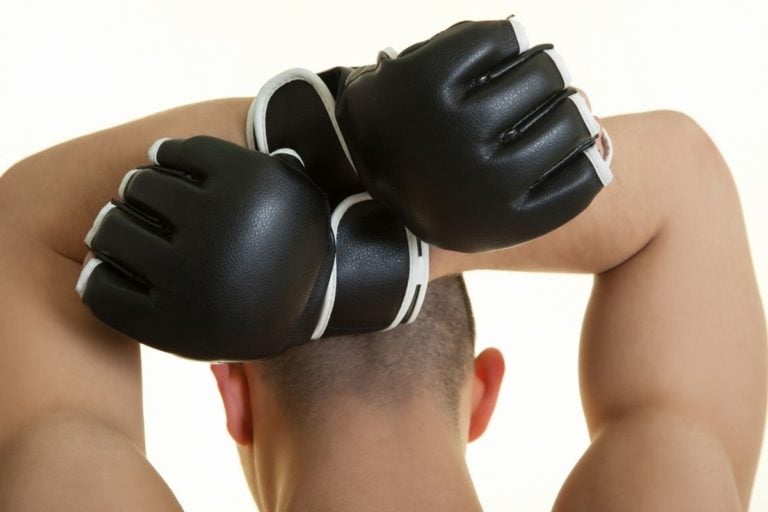What are the MMA Fighting Rules (Fully Explained)
Mixed martial arts (MMA) is the most versatile combat sport, and the only one where fighters compete in the standup, clinch, and on the ground. Like that’s not complex enough, they are allowed to strike with all limbs, wrestle, and attack with chokes and joint locks. That being said, it’s not a surprise that MMA rules are quite complex, but how much actually?
Most MMA promotions across the world organize events in alignment with the “Unified Rules of MMA” created in 2000. According to these rules, regular matches have 3 rounds with each one being 5 minutes long (1min break between), while title fights are 5 rounds. Each fighter must wear 4oz open-fingered gloves and is NOT allowed to
- Poke/gouge eyes
- Strike throat/groin area/back of the head
- Kick/stomp/knee grounded opponent and strike with “12 to 6 elbow”.
Sounds simple, right? Well, as you are about to learn in this article, MMA rules are a bit more complex.
MMA fighting rules explained
MMA might be the most complex combat sport of them all, but learning the rules and how these work in practice is not hard. Still, bear in mind that the rules differ between promotions, but not much. For example, just about every North and South American and European promotion have adopted the “Unified Rules”. The ones in Asia like “RIZIN FF” or “ONE FC” have their own. Don’t worry about it, you are going to learn all about those too.
Length of MMA matches
According to Unified Rules, non-title matches have 3 rounds with each round being 5 minutes long, and there is a 1-minute break between each round. On the other side, title fights and non-title bouts that are booked as the main event include 5 rounds of action. The length of the round and breaks between the rounds are the same.
The length of the matches is a bit different in the promotions that haven’t adopted the Unified Rules. The best example is the Japanese “Rizin FF” promotion where the matches have 3 rounds, but the first round is always 10 minutes long. The second and third rounds are 5 minutes long, and the rest period between is 1 minute. This rule was the same in the legendary “Pride FC” promotion.
Techniques
MMA is the most versatile combat sport where fighters can use all limbs as weapons to strike on the feet, grapple in the clinch, and fight on the ground. Here is a list of the most common legal techniques:
- Striking (standup) — jab, hook, uppercut, roundhouse low/high kick, front kick (teep), elbow and knee strikes
- Takedowns — single/double leg takedowns, ankle pick, outside leg trip and various other trips, judo throws, and sweeps.
- Ground positions — full mount, full guard, half-guard, side control, north-south, back mount
- Chokes — rear-naked choke, triangle choke, anaconda, americana, arm triangle
- Joint locks — armbar, kimura, leg lock, kneebar
Fighting Gear
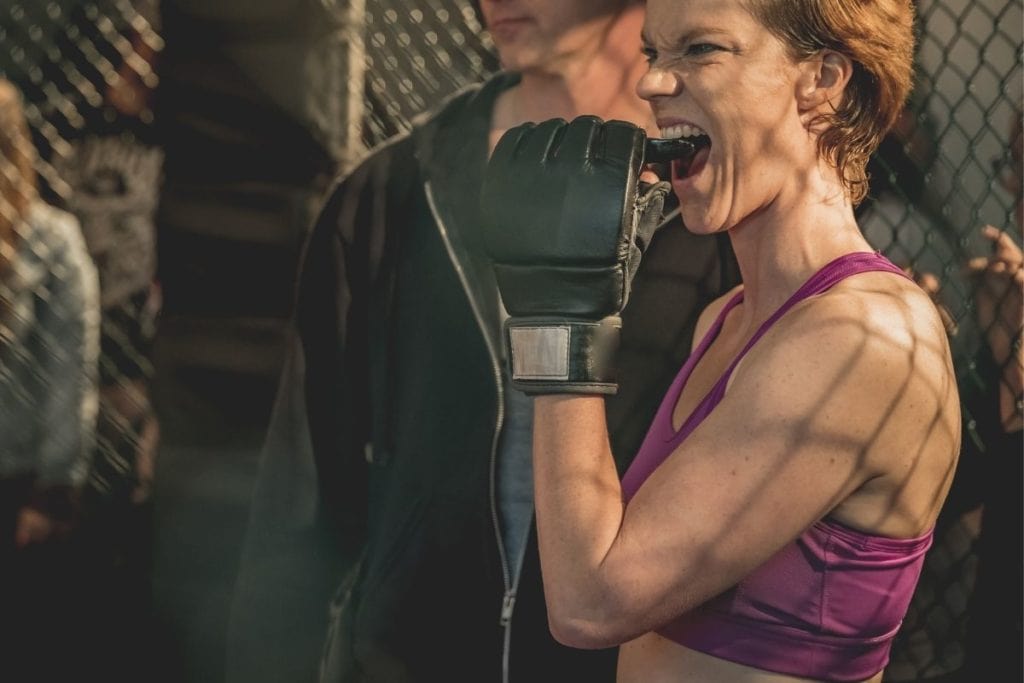
MMA fighters must wear the following gear approved by the Athletic Commission:
- 4oz open-fingered gloves — the design may vary between the promotions. The gloves are designed to allow a fighter to move their fingers and grab and hold the opponent. Amateur contestants wear a bit more padded 6oz gloves.
- Shorts — there a different types of shorts like deep-cut shorts, long-fit or short-fit
- Mouthguard and groin cups are mandatory
- Headgear (only in amateur competition)
- Shin pads (only in amateur competition)
Match scoring
Most MMA promotions have adopted a 10-point must scoring system taken from boxing. Each event includes three judges sitting beside the ring/cage, and their main job is to score the fight round by round. The winner gets 10 points while the loser gets 9, 8, or 7 based on how dominant the winner was. If a match goes to distance, the officials will sum up the scores from all three judges, and declare one of five potential decision outcomes:
- Unanimous decision — all three judges agree on which fighter won the match
- Majority decision — two judges agree on which fighter won the match, while the third judge scored the match as a draw
- Split decision — one judge scored the match for a fighter A, the second judge for a fighter B, while the third judge scored it as a draw
- Unanimous draw — all three judges agree that neither fighter won the match
- Majority Draw — two judges agree that neither fighter won the match, while the third judge scores it for one of the fighters
- Split draw — one judge scores the fight in favor of one fighter, the second judge has it for the other fighter while the third judge scores it as a draw.
Some MMA promotions like ONE FC and RIZIN FF that haven’t adopted the Unified Rules have their own scoring systems. For example, the match is scored in its entirety, not round by round.
Judges criteria
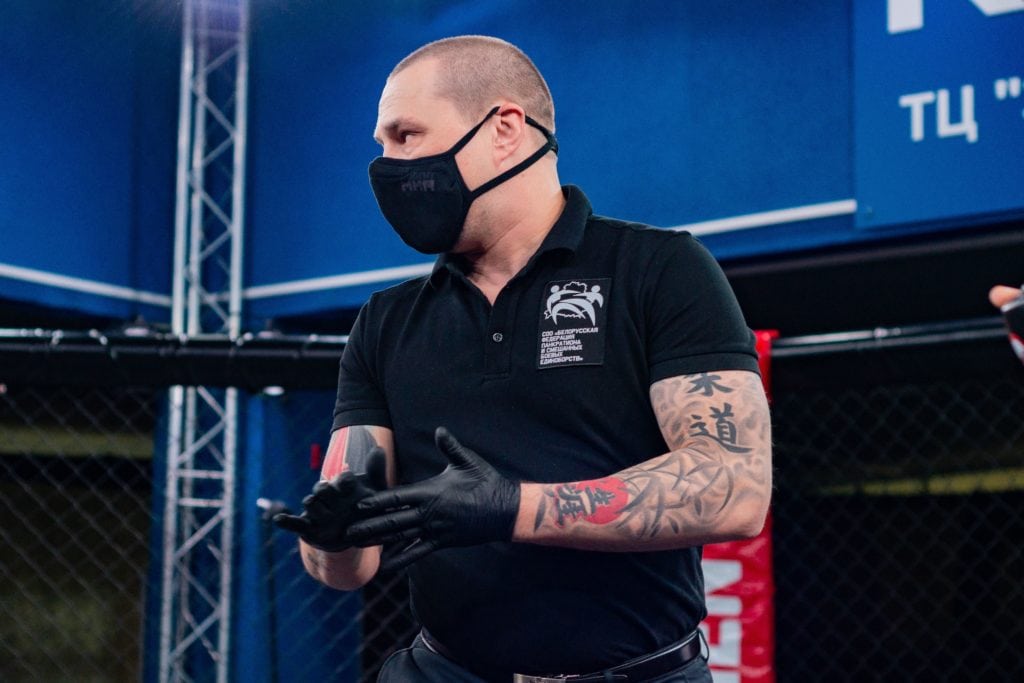
To determine the winner of the round, MMA judges use strict criteria that vary between different promotions. UFC judges and all others that follow Unified Rules of MMA use the following three criteria, in this order:
- Effective grappling or striking
- Effective aggression
- Fighting area control
In some other promotions like ONE FC, the judges utilize different criteria:
- Knockdowns or submission attempts
- Damage done
- Ground control, generalship, striking combinations, superior position
Weight classes

According to the Unified Rules, the sport of MMA includes the following 14, weight classes. Bear in mind that the promotions are not obligated to adopt all weight classes. This is why UFC has 12 in total (8 for men and 4 for female fighters), ONE FC has 10, while RIZIN FF has 12 (including open weight) :
| Weight Class | Lower weight limit | Upper weight limit |
| Strawweight | / | 115 lbs (52.2 kg) |
| Flyweight | 115 lbs (52.2 kg) | 125 lbs (56.7 kg) |
| Bantamweight | 125 lbs (56.7 kg) | 135 lbs (61.2 kg) |
| Featherweight | 135 lbs (61.2 kg) | 145 lbs (65.8 kg) |
| Lightweight | 145 lbs (65.8 kg) | 155 lbs (70.3 kg) |
| Super Lightweight | 155 lbs (70.3 kg) | 165 lbs (74.8 kg) |
| Welterweight | 165 lbs (74.8 kg) | 170 lbs (77.1 kg) |
| Super welterweight | 170 lbs (77.1 kg) | 175 lbs (79.4 kg) |
| Middleweight | 175 lbs (79.4 kg) | 185 lbs (88.5 kg) |
| Super Middleweight | 185 lbs (88.5 kg) | 195 lbs (88.5 kg) |
| Light Heavyweight | 195 lbs (88.5 kg) | 205 lbs (93.0 kg) |
| Cruiserweight | 205 lbs (93.0 kg) | 225 lbs (102.1 kg) |
| Heavyweight | 225 lbs (102.1 kg) | 265 lbs (120.2 kg) |
| Super Heavyweight | 265 lbs (120.2 kg) | No limit |
What is forbidden in MMA?
- Punches to the back of the head — are also known as “rabbit” punches and are very dangerous. Just a single hard blow to the back of the head can damage the spinal cord and brain.
- Soccer kicks — are one of the most brutal techniques. It usually occurs when one fighter is on the ground, and the other one standing throws a kick in a similar motion as when you are kicking a ball. However, soccer kicks are legal in some promotions like RIZIN FF.
- Kicking or knee striking the head of the grounded opponent — is not allowed. A fighter is considered grounded when one or both of his legs or hands are in contact with the ground. Again, kicks to the head of the grounded opponent are legal in RIZIN FF, and knees are also legal in ONE FC.
- 12–6 elbow — is one of the most famous rules. In short, fighters are not allowed to throw an elbow from the upper position (12 o’clock) all the way down to 6 o’clock.
Pull illegal dirty moves and tricks
- Eye gouging
- Striking or grabbing the groins, throat, or spine
- Fish hooking or hair pulling
- Grabbing the fence or holding the opponent’s shorts or gloves
What happens when an MMA fighter commits a foul?
The right answer truly depends on did the foul caused any injuries or anything else that might have a negative impact on the outcome of the fight. Here is how it works in practice.
When a fighter commits a foul, the referee would pause the fight, and ask the fighter who committed a foul to go into a neutral corner. This is a place inside the ring/octagon where they are away from their coaches and the coaches of their opponent. They need to be here because, according to rules, coaches are not allowed to talk to their fighters while the injured opponent is recovering.
If a fighter grabbed the fence or shorts, the referee would issue a warning or deduct a point. But if they landed an illegal strike, then the referee would ask the injured fighter how they feel, and in most cases, bring in the ringside physician to determine whether a fighter can continue or not. In most cases, athletes are able to recover from light eye pokes, knee strikes, or cuts. In this case, it’s up to the referee to decide whether they are going to issue a verbal warning, or deduct the point. But, if the ringside physician says that a fighter can’t continue, then the match is over.
The outcome depends on whether the referee thinks the foul was intentional or unintentional.
Intentional — a fighter who committed a foul gets disqualified and the injured fighter is declared a winner. This happened when Petr Yan landed an illegal knee on Aljamain Sterling, who after not being medically clear to continue, was declared a winner.
Unintentional — there are two possible outcomes. If the match got stopped before the half of the scheduled rounds (before the second round was over in 3 round match), the match would end in a “No Contest”. If the match had to be stopped after the first half of the match has been completed, the fight goes to the judges’ scorecards. The judges would sum up the scores from the completed rounds and declare a winner.
What are the most common fouls in MMA?
Here is a list of the most common fouls in modern MMA and how the referees deal with them.
- Eye pokes — are, without a doubt, the most common foul which you can see in just about every major MMA event. In most cases, fighters are able to recover and continue, while the fighter who committed a foul would get away with a verbal warning. But if they repeat the foul, the referee would probably deduct a point.
- Groin strike — happens all the time usually when a fighter is throwing a front or inside leg kick, or knee in the clinch. Most of the time, fighters are able to recover.
- Knee to the head of the ground opponent — is also a common foul that often results in serious injuries and fighters being disqualified.
- Fence grabbing — is a serious foul that has a direct impact on the outcome of the fight. In some cases, fighters get away with a verbal warning. But if they grab the fence while the opponent is trying to take them down, then the referee would deduct a point.
What happens when an MMA fighter misses weight?
When a fighter steps on the scale and is above the upper weight limit of their division, the Athletic Commission would give them another hour or two to cut extra pounds. Fighters will go back to the sauna or hot bath, and in a lot of cases, manage to lose another pound or two which is often enough to make weight.
If they miss weight in their second attempt, then the fight is “off” on paper because they no longer belong in that weight class. For example, a fight booked at Lightweight ranges between 145–155 pounds, so a fighter who steps on the scale at 160 pounds can’t compete as a lightweight. However, there is a solution and the promotion would, in this case, arrange a catchweight bout.
A Catchweight bout is a match that takes place outside (usually above) the previously agreed weight. If the match was supposed to be at 155 pounds, the catchweight would be at 160 or maybe even higher. The promoter would ask the opponent to accept the new circumstances, which they do in most cases, and the fight is on. The only thing left is for the Athletic Commission to approve this match.
